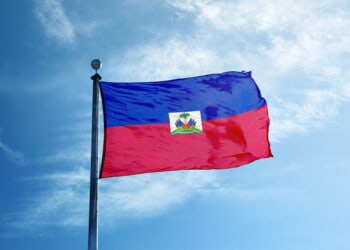Whoever wants to know the heart and mind of America, had better learn baseball.
— Jacques Barzun
The quote above from the justly respected historian and cultural critic appears in his 1954 essay collection, God’s Country and Mine. It came in the middle of the last full decade when it could be truthfully said that baseball was indeed America’s national pastime, the most popular sport in the country by far. The quote carried cultural weight then.
There were only 16 Major League teams in the ’50s, and as that decade began they were all in the Northeast and Midwest.
If Barzun were alive and writing today — he went end of watch in 2012 at the age of 104 — he would doubtless have located our national heart and mind in football, which overtook baseball in popularity sometime in the late sixties and never looked back. Football’s lead over baseball increased slowly over the final decades of the 20th and picked up speed in the new century.
Today’s Americans just can’t get enough of gridiron head-butting.
But I was a larval sports fan when baseball was number one on all score cards. The last two words of the National Anthem then were: “Play ball!” People a couple of decades or more younger than me are surprised to learn that baseball was the ’50s favorite. They’re shocked when I tell them that the second favorite sport then was boxing. Gillette’s Friday night fights were destination viewing. My Dad and I would never miss them. Football was an also-ran, save for interscholastic football — my high school against your high school — which was popular in most places.
From the 1920s through the ’50s, baseball’s most glorious era, the summer game and its everyday pleasures was part of the cultural connective tissue of millions of Americans, mostly, but not exclusively, boys and men. We watched it, played it, read about it, talked about it. We cared about it. Pennant races were followed. The World Series — the only postseason series then, wildcards being limited to poker — was a major news event. The Series games were in the afternoon then, and during my junior and senior high school Octobers (1954 through ’59), only teachers with anger management issues or those not getting enough fiber in their diets wouldn’t let students have the games on the radio during class.
The ’50s are thought of by many as one of baseball’s “golden ages.” And how could it miss when it featured such standout players as — to name just the best of the best: Willie Mays, Mickey Mantle, Yogi Berra, Ted Williams, Whitey Ford, Minnie Minoso, Al Kaline, Roy Campanella, Duke Snider, Pee Wee Reese, Stan Musial, Robin Roberts, Frank Robinson, Henry Aaron, Warren Spahn, Eddie Mathews, Roberto Clemente, and Ernie Banks? (Apologies to any old-timer whose favorite I’ve skipped.) A solid second tier of players also gave satisfaction. It was a great time to be a young boy learning about and engaging with a great game.
My mates and I were engaged with baseball in a way young boys never will be again. There were lots of young boys in my fertile, blue collar Tampa neighborhood. The local playground with its baseball field was the center of our universe. It was our daily destination after we were released from the drudgery of school. Thanks to Tampa’s weather we could play baseball year round. And we did. During those months that people on the mainland call winter we spent some time on the playground’s two basketball courts. But our hearts were on the diamond. Those who excelled there were held in high regard. If any boy who attended junior high school with me had any ambition other than to be a Major League baseball player, he kept it to himself.
My childhood playground is only about six blocks from where I live now. It’s with regret that when I drive past it I don’t see anyone playing on the baseball field. I guess today’s young boys are at home playing computer games, staring at their smart phones (dementia phonedosis), or rapping on one of those social media platforms with goofy names. (Spotify sounds to me like a dermatological disorder.)
Much of our lawn mowing and paper route money in those peaceful Eisenhower days was spent on baseball cards, which came with slabs of bubblegum, often stale and hard, which tasted about like what chewing the cards might have. Most of us just kept the cards and ditched the gum. The cards smelled like bubblegum for years. Getting a complete set of Topps baseball cards in the spring passed for an accomplishment among us.
I stopped collecting these about 1957 or so when, with puberty overtaking me, I became more interested in real girls than in cardboard baseball players. Of course I still watched, played, and cared about baseball. But it no longer commanded all of my attention. There was another game in town, and the rules in this one were less clear and far trickier than baseball’s.
Decades later those cards we collected became valuable. None of us suspected this would happen. So few of us kept the cards when we became grownups. While I was in the Navy my mother, in an attempt to rehabilitate the disaster area that had been my room when I lived at home, threw away three or four cigar boxes full of my baseball cards, including duplicates of the worthies listed above, as well as a large stack of comic books. I wasn’t sore about this at the time as I was no longer consulting either. I came to regret this later when it became clear that I could have lived comfortably for two or three years from the proceeds of selling those cards.
There were flaws in baseball’s fabric even in the fabulous ’50s. There wasn’t much of what we have learned to call competitive balance in those years. The New York Yankees won the American League championship in eight of those 10 years, with only the 1954 Cleveland Indians and the 1959 Chicago White Sox keeping the Pin Stripes out of the World Series. The National League was pretty New Yorkie too, with either the Brooklyn Dodgers or the New York Giants taking six of 10 NL pennants. A New York team won the World Series in all but 1958, when the Milwaukee Braves turned the Yankees away in seven, and in 1959, when the transplanted Los Angeles Dodgers won it all.
There were only 16 Major League teams in the ’50s, and as that decade began they were all in the Northeast and Midwest. They included such exotica as the Boston Braves, the Philadelphia Athletics, and the poster child for long-term futility, the St. Louis Browns. All three of these teams, as well as the New York Giants and Brooklyn Dodgers, would find new homes before the decade was done. The Boston Braves became the Milwaukee Braves, the Philadelphia Athletics the Kansas City Athletics, the St. Louis Browns the Baltimore Orioles.
If I’m privileged to still be here a couple of more years, I’ll have lived long enough to see the peripatetic Athletics call five cities home: Philadelphia, Kansas City, Oakland, Sacramento, and Las Vegas. With the Dodgers and Giants moving to Los Angeles and San Francisco, the game was no longer heterocoastal but bicoastal. Dixie got in the game later with teams in Atlanta and Houston.
These moves came about because of falling attendance caused by deteriorating old ball yards in deteriorating urban neighborhoods that were becoming crime-ridden. Fans would rather stay home and watch television — which was invading more and more American homes then — than risk getting mugged on the way to the ticket booth. Also there were no spacious parking lots around these old stadiums. Fans early in the previous century either walked to the ball park or took public transportation. But by the ’50s more and more fans lived in the suburbs and knew they weren’t likely to find a parking place anywhere near the stadium. They also knew if they could find a spot the chances were good that their tires, hub caps, and battery would have been sold on the city streets before the seventh inning stretch. Time to move.
Tampa had no Major League team back then, at least during the regular season. But a majority of teams held their spring camps and played their early exhibition games in Florida. For the longest time Tampa hosted the Cincinnati Reds. This included the prime of Reds first baseman Ted Kluszewski, whose muscular arms were so big he cut his uniform sleeves off to keep them from restricting his swing. Teammates said he was strong enough to rotate the tires on the team bus without using a jack. I don’t know if this was true, but he was strong enough to hit 171 homes runs over a four year stretch (’53 through ’56) before a back injury put paid to his power. In ’56 the Reds promoted a fairly promising young right fielder name Frank Robinson. The team was fun to watch.
And watch we did. Reds spring games were played at an old pile called Plant Field, just blocks from my elementary school. Ticket buyers entered the baseball stands through an old exhibition building that was used for the annual Florida State Fair. But there were multiple places where enterprising youngsters could slip in and enjoy the festivities without benefit of ticket. Spring training was a far less formal business then, and youngsters could mix and mingle with the players as they went from the clubhouse to the field and back.
We also enjoyed watching baseball on TV’s Baseball Game of the Week, which for a bit was announced by Hall of Famers Dizzy Dean and his straight man, PeeWee Reese. Not even George W. Bush could mangle English the way Diz could. Who knew the past tense of the verb to slide was slud? As in, “He slud into third”? Our English teachers might have been horrified, but we didn’t mind.
A 1953 spring Reds game was the occasion of the first time I got into what passed for serious trouble at school back then. I’d read that sunny morning that the Athletics were playing the Reds in the afternoon, and a lefty named Bobby Shantz would start for the A’s. I was keen to see him work as he had managed to win 24 games the year before for an A’s team with less than a potent lineup.
Also I was keen to see him as he was only 5-6, barely taller than I was. So after lunch at school I had a brain bubble that only fifth grade boys are capable of. Incredibly, I thought that if I asked my teacher to go to the bathroom, with almost 40 other students to keep track of, she wouldn’t notice that I didn’t return to class. (I know. This is how fifth grade boys think, and why they should not be in charge of anything and should be kept away from sharp objects.) Instead of going to the little boys’ room, I lit out for the ball park.
On arrival I slipped in through my usual undefended spot and then slipped into a reserve seat near the field when the usher was looking the other way. SOP. I’d barely settled in when the man seated next to me turned to me and said, “See that older gent sitting a few rows above us. That’s Connie Mack.”
Sure enough, there was a thin, dignified man of something more than mature years wearing a blue suit and sporting a high collar and tie. At 10 years old I had learned that the best way to deal with grownups in most cases was to humor them, so I said something appropriate, like “Wow,” even though I hadn’t the first idea who Connie Mack was. Nor could I fathom why a man would wear a suit and tie to a baseball game on a warm Florida afternoon. Later, reading a sports magazine, I learned that Connie Mack had been the A’s majority owner and the team’s field manager for 50 years.
When I got home I learned that my teacher was more observant than I had given her credit for. She called my mother and reported that I was MIA. My mother had to come to the principal’s office with me in order to get me re-admitted to school. Mom, was not amused. The family dinner table that night was tense.
For a few years the Chicago White Sox also trained in Tampa, but at Al Lopez field, which was four or five miles from my neighborhood. It was not only distant but newer and more secure. I could find no weaknesses in the perimeter, though Lord knows I tried. So if we wanted to watch those such as Minnie Minoso, Nellie Fox, and Jungle Jim Rivera, it was a long bicycle ride and we had to pony up for a ticket. Very discouraging, as my mates and I were convinced that one of the articles of the Magna Carta ensured the right of young boys to watch professional baseball games for free. On this, like Rick Blaine on the matter of healing waters in Casablanca, we were misinformed.
I can’t leave the subject of 1950s baseball without commenting on the positive contribution it made to race relations. Florida has not been culturally Southern — with all the good and bad that goes with this — for decades. But it was in the 1950s. The laws and etiquette of Jim Crow were enforced as rigidly here as elsewhere in Dixie. So our playground — and most other areas of our lives then — were monochrome. But professional baseball was not. Baseball was ahead of the rest of the country in integration, beginning with a certain famous Brooklyn Dodger in 1947.
I never heard a single one of my playground teammates object to this. We knew how difficult the game we loved was to play. So we admired those who could play it at the highest level, regardless of complexion. As Neil Armstrong might have phrased it, “One small step…”
There were other things to divert young boys in the ’50s. There was fishing, swimming, cowboy movies (John Wayne was the favorite by a mile), and riding our bicycles everywhere (without benefit of helmet or elbow pads). But the organizing principle of our lives in those simpler days was baseball. And as organizing principles go, it wasn’t bad at all. Tik Tok couldn’t hold a candle to it.
The 20th century was called “The American Century.” (Who owns the 21st is still up for grabs.) The 20th was also baseball’s century. Our most traditional game has changed — some of the changes I’ve lamented in previous TAS columns. But while baseball is considerably less central to American lives than it was before disco, it still has its moments: the slickly turned double play, the long on-target throw from deep right field to third base, the well executed hit and run. And I can still be often found manning my couch at first pitch.
READ MORE from Larry Thornberry:
Real Men Not Welcome at the Book Store
Reflections on 1970s Baseball and the Snakes in Baseball’s Garden



![Steak ’n Shake Mocks Cracker Barrel Over Identity-Erasing Rebrand [WATCH]](https://www.right2024.com/wp-content/uploads/2025/08/Steak-n-Shake-Mocks-Cracker-Barrel-Over-Identity-Erasing-Rebrand-WATCH-350x250.jpg)


![Mount Rushmore Could Get Trump Upgrade Under GOP Push [WATCH]](https://www.right2024.com/wp-content/uploads/2025/07/Mount-Rushmore-Could-Get-Trump-Upgrade-Under-GOP-Push-WATCH-350x250.jpg)

![Human Trafficking Expert Details Horrific Biden Admin Endangerment of Migrant Kids [WATCH]](https://www.right2024.com/wp-content/uploads/2025/07/Human-Trafficking-Expert-Details-Horrific-Biden-Admin-Endangerment-of-Migrant-350x250.jpg)






